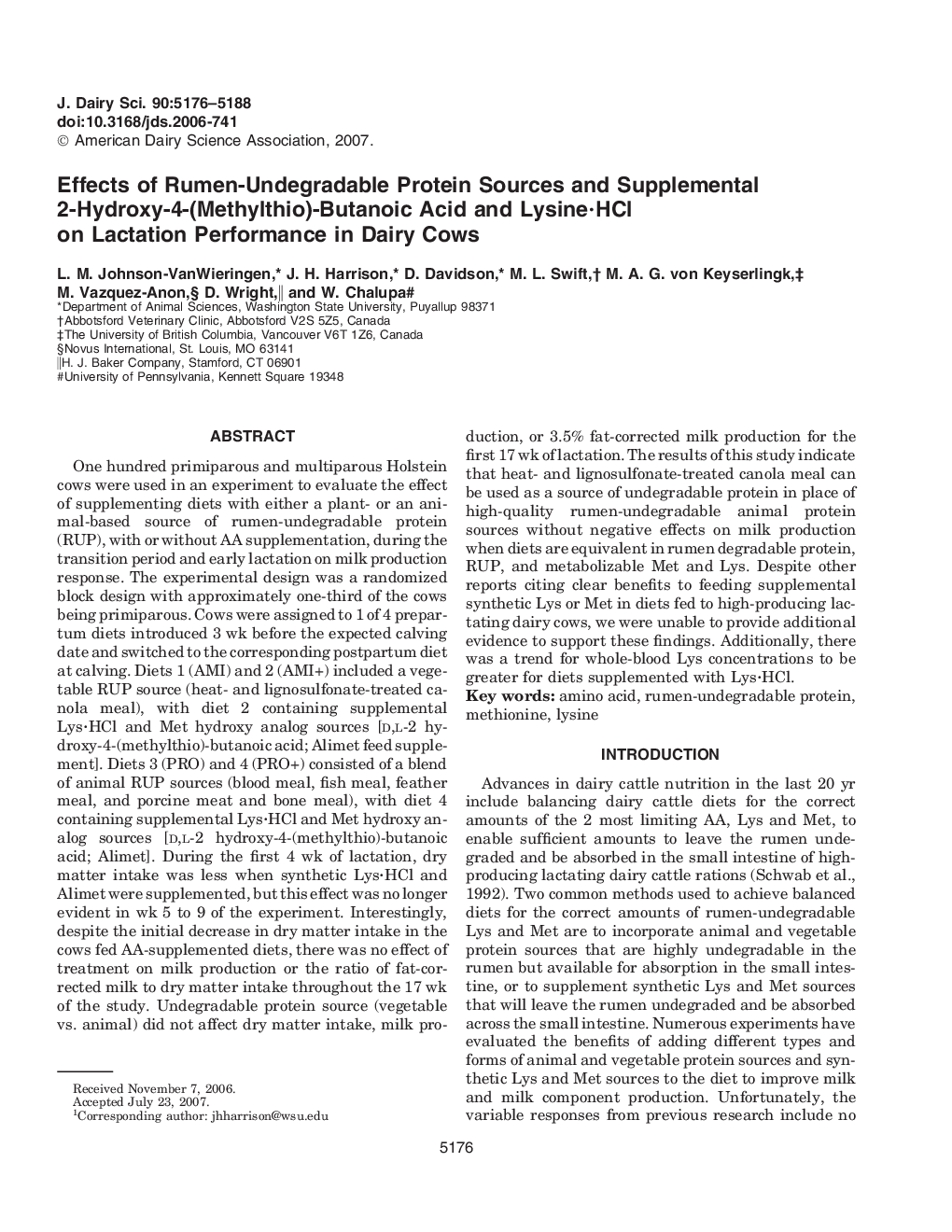| Article ID | Journal | Published Year | Pages | File Type |
|---|---|---|---|---|
| 2440007 | Journal of Dairy Science | 2007 | 13 Pages |
Abstract
One hundred primiparous and multiparous Holstein cows were used in an experiment to evaluate the effect of supplementing diets with either a plant- or an animal-based source of rumen-undegradable protein (RUP), with or without AA supplementation, during the transition period and early lactation on milk production response. The experimental design was a randomized block design with approximately one-third of the cows being primiparous. Cows were assigned to 1 of 4 prepartum diets introduced 3 wk before the expected calving date and switched to the corresponding postpartum diet at calving. Diets 1 (AMI) and 2 (AMI+) included a vegetable RUP source (heat- and lignosulfonate-treated canola meal), with diet 2 containing supplemental Lys·HCl and Met hydroxy analog sources [d,l-2 hydroxy-4-(methylthio)-butanoic acid; Alimet feed supplement]. Diets 3 (PRO) and 4 (PRO+) consisted of a blend of animal RUP sources (blood meal, fish meal, feather meal, and porcine meat and bone meal), with diet 4 containing supplemental Lys·HCl and Met hydroxy analog sources [d,l-2 hydroxy-4-(methylthio)-butanoic acid; Alimet]. During the first 4 wk of lactation, dry matter intake was less when synthetic Lys·HCl and Alimet were supplemented, but this effect was no longer evident in wk 5 to 9 of the experiment. Interestingly, despite the initial decrease in dry matter intake in the cows fed AA-supplemented diets, there was no effect of treatment on milk production or the ratio of fat-corrected milk to dry matter intake throughout the 17 wk of the study. Undegradable protein source (vegetable vs. animal) did not affect dry matter intake, milk production, or 3.5% fat-corrected milk production for the first 17 wk of lactation. The results of this study indicate that heat- and lignosulfonate-treated canola meal can be used as a source of undegradable protein in place of high-quality rumen-undegradable animal protein sources without negative effects on milk production when diets are equivalent in rumen degradable protein, RUP, and metabolizable Met and Lys. Despite other reports citing clear benefits to feeding supplemental synthetic Lys or Met in diets fed to high-producing lactating dairy cows, we were unable to provide additional evidence to support these findings. Additionally, there was a trend for whole-blood Lys concentrations to be greater for diets supplemented with Lys·HCl.
Related Topics
Life Sciences
Agricultural and Biological Sciences
Animal Science and Zoology
Authors
L.M. Johnson-VanWieringen, J.H. Harrison, D. Davidson, M.L. Swift, M.A.G. von Keyserlingk, M. Vazquez-Anon, D. Wright, W. Chalupa,
